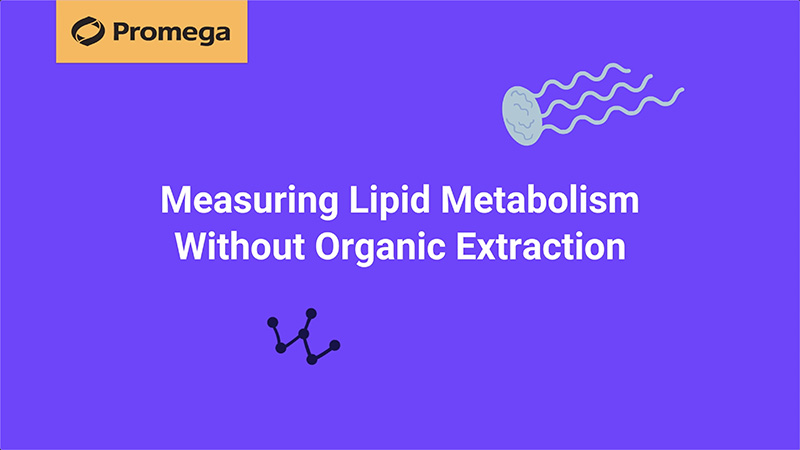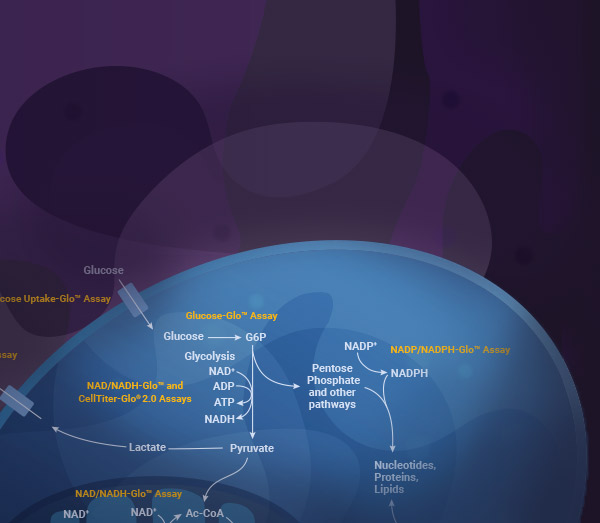Lipid Metabolism
Promega lipid metabolism assays provide sensitive, simple methods to detect and quantify glycerol, triglyceride, cholesterol and cholesterol esters. These assays can be used for the quantification of lipolysis and lipogenesis, among other biological processes. The lipid metabolism assays are based on core bioluminescent technology featured in other Promega metabolism assays.
These assays are adaptable to many biological samples, including cultured cells in monolayer or 3D structures, tissues, cell culture medium, plasma and serum. Cell types used with the lipid metabolism assays include hepatocytes grown in monolayer and 3D cultures and adipocytes. The protocol eliminates the need for organic extraction, simplifying sample preparation steps. The assays are sensitive with a large linear range, reducing the number of sample dilutions required and increasing the quantitative power to discriminate small changes in lipid metabolite levels.
Filter By
Showing 4 of 4 Products
Introduction to Lipid Metabolism Assays

Options for lipid metabolism assays include bioluminescent plate-reader based assays to detect glycerol, triglyceride, cholesterol and cholesterol ester levels in biological samples. These assays are fast and easy to use, as they require no organic extraction and only two incubation steps (at either 37°C or room temperature), and provide quantitative results with the use of a standard curve. Unlike staining and other methods that require organic extraction, these bioluminescent assays are simple to implement for laboratories that are new to lipid metabolism research.
Lipids perform many roles in an organism, including signaling functions, acting as components of biological membranes and as a form of energy storage. Understanding changes in levels of lipids in biological samples such as cell culture samples, cultured 3D cell structures, tissues, and plasma or serum samples is a use of lipid metabolism assays.
Alteration of lipid metabolism results in a variety of disorders. Steatosis refers to the aberrant accumulation of lipids in tissues. Steatosis and the measurement of abnormal lipid levels in tissues is relevant to metabolic disorder research, including diabetes, obesity and liver disorders. Non-alcoholic fatty liver disease (NAFLD) and non-alcoholic steatohepatitis (NASH), two liver disorders drastically increasing in global prevalence, are key targets of many drug discovery programs. Lipid metabolism assays are useful tools in the study of these disorders.
Lipolysis is the process by which cells hydrolyze one molecule of triglyceride to three molecules of fatty acids and one molecule of glycerol. An increase in lipolysis can be measured as an increase in free glycerol levels in cell culture samples using a glycerol assay.
Lipogenesis is the creation of triglyceride from one molecule of glycerol and three molecules of fatty acid, and it is a way in which cells store energy. An increase in lipogenesis can be measured as the quantification of intracellular triglycerides using a triglyceride assay. Triglyceride assays quantitate the levels of triglyceride by determining the total level of glycerol, the level of free glycerol and the resulting difference is the level of triglyceride.
Cholesterol is an essential component of cellular membranes and is required to produce hormones. However, an increased level of circulating cholesterol is associated with increased risk of cardiovascular disease and atherosclerosis. Cholesterol is transported in plasma in the form of cholesterol ester, in low-density lipoproteins (LDL) or high-density lipoproteins (HDL). One molecule of cholesterol ester is converted to one molecule of cholesterol via the action of the enzyme cholesterol esterase. Cholesterol assays are used to measure total cholesterol (including cholesterol esters) and free cholesterol levels, in a variety of sample types.



